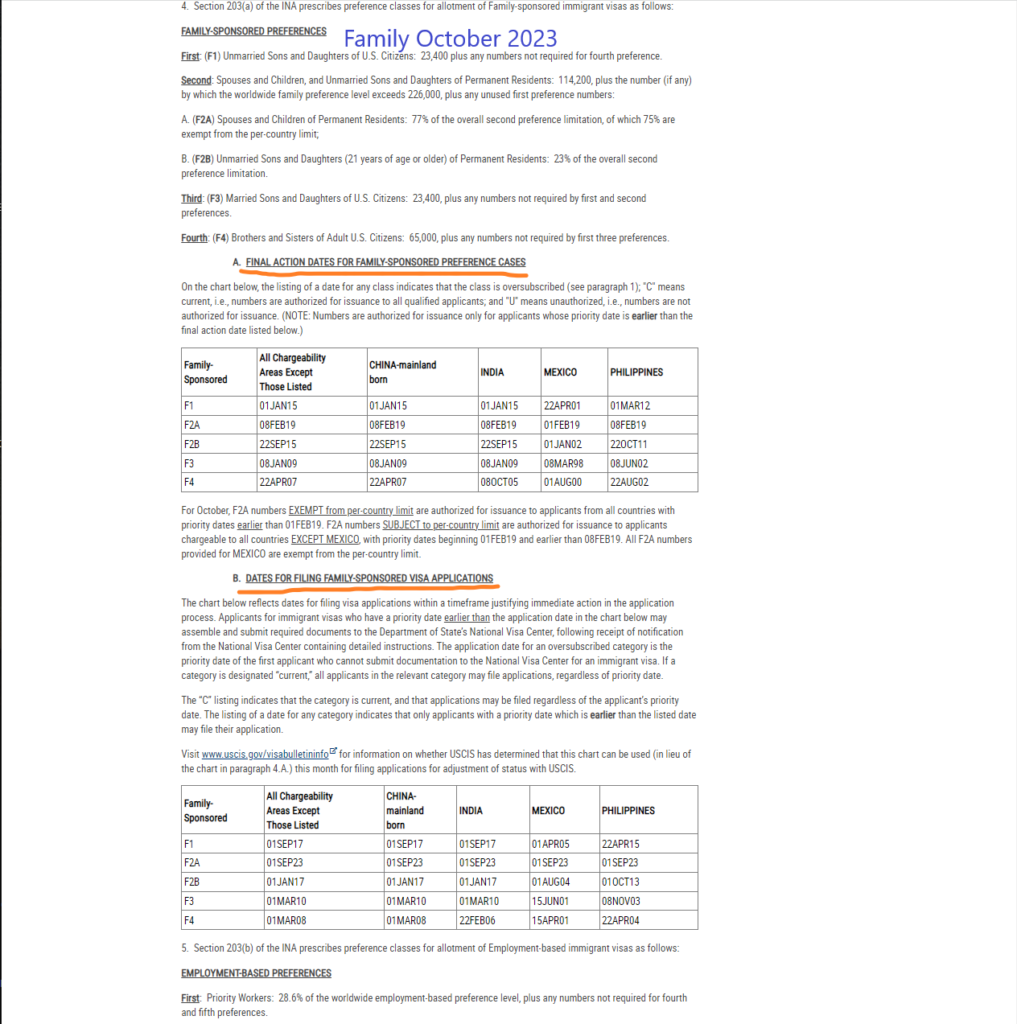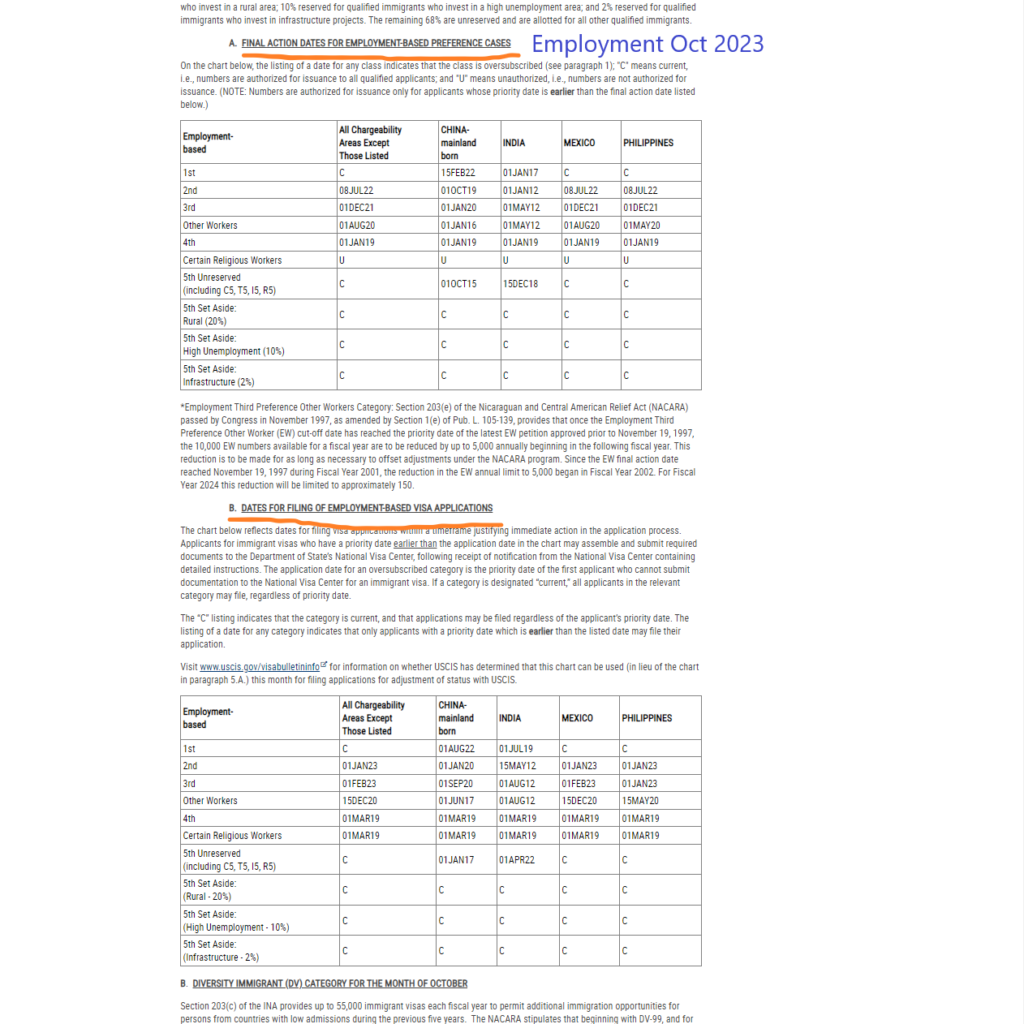February 2024
USCIS determined that for November 2023, applicants in all family-sponsored preference categories and all employment-based preference categories must use the Dates for Filing chart.
The most notable change is in the F2A category, where the final action dates for most countries moved forward from November 2019 to February 2020.
Categories in the employment-based preferences remained largely unchanged, indicating a relative stability in these visa allocations.
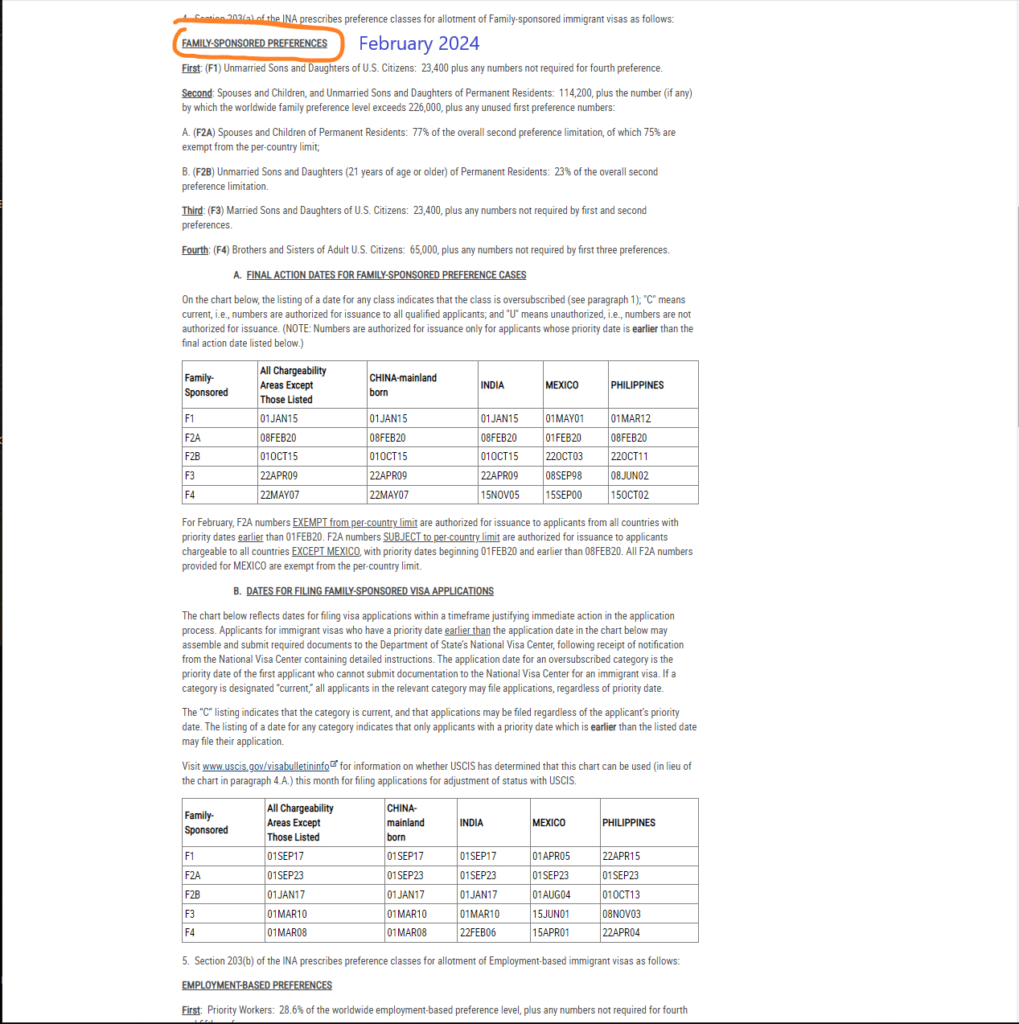
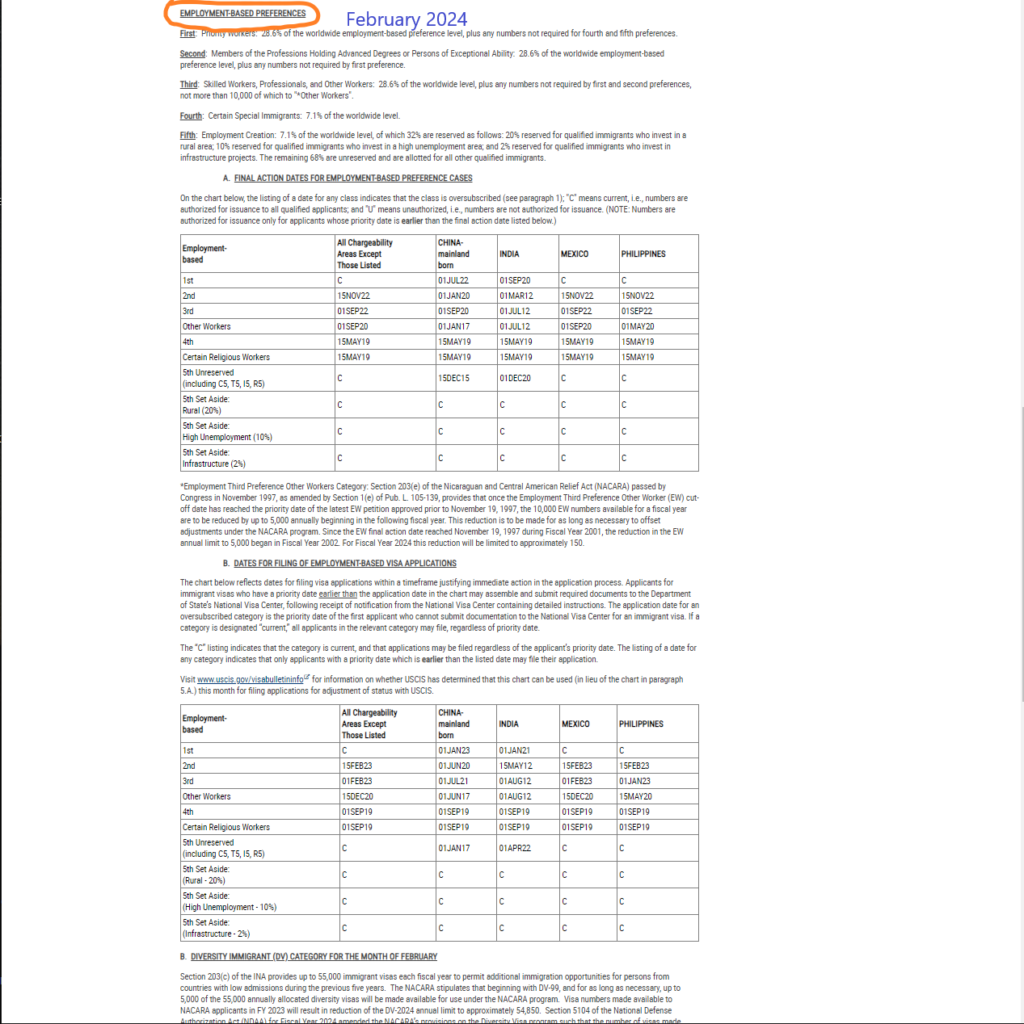
November 2023
USCIS determined that for November 2023, applicants in all family-sponsored preference categories and all employment-based preference categories must use the Dates for Filing chart. No obvious changes from previous month.
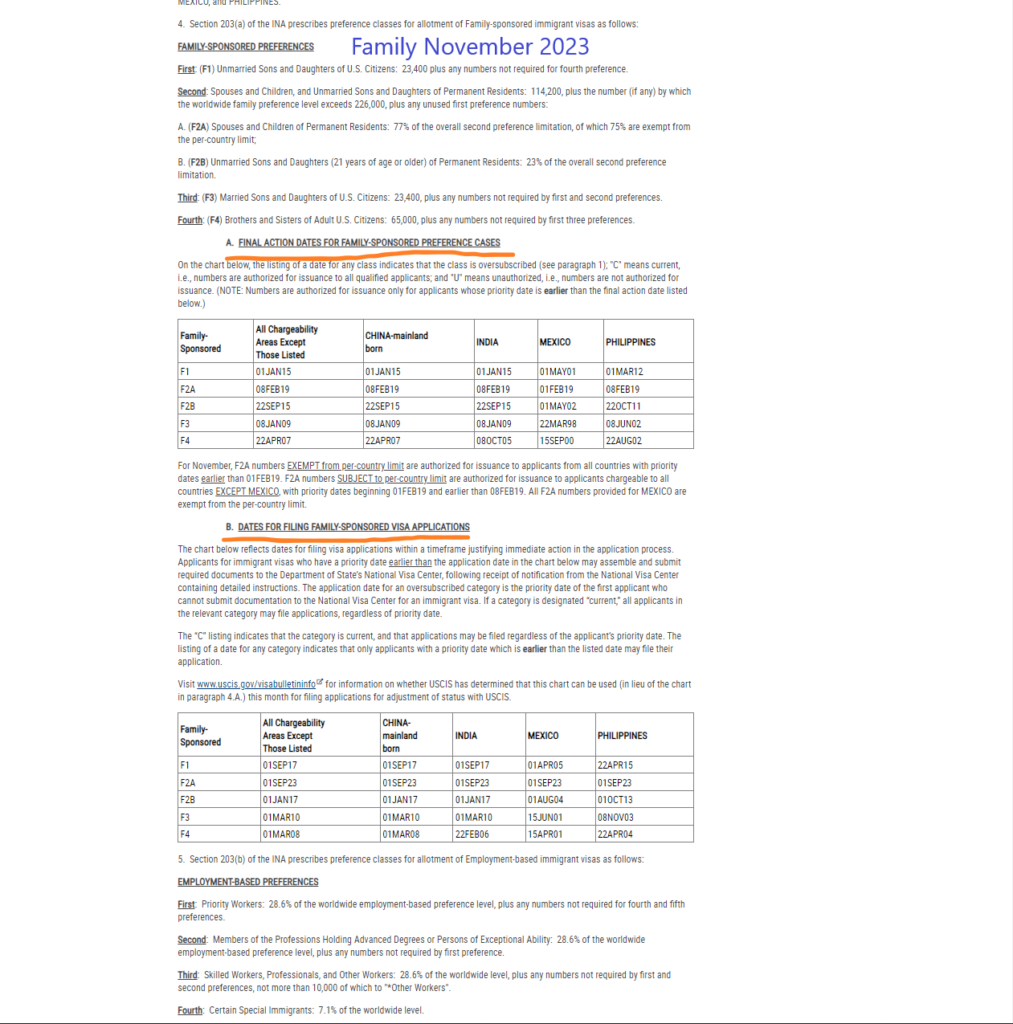
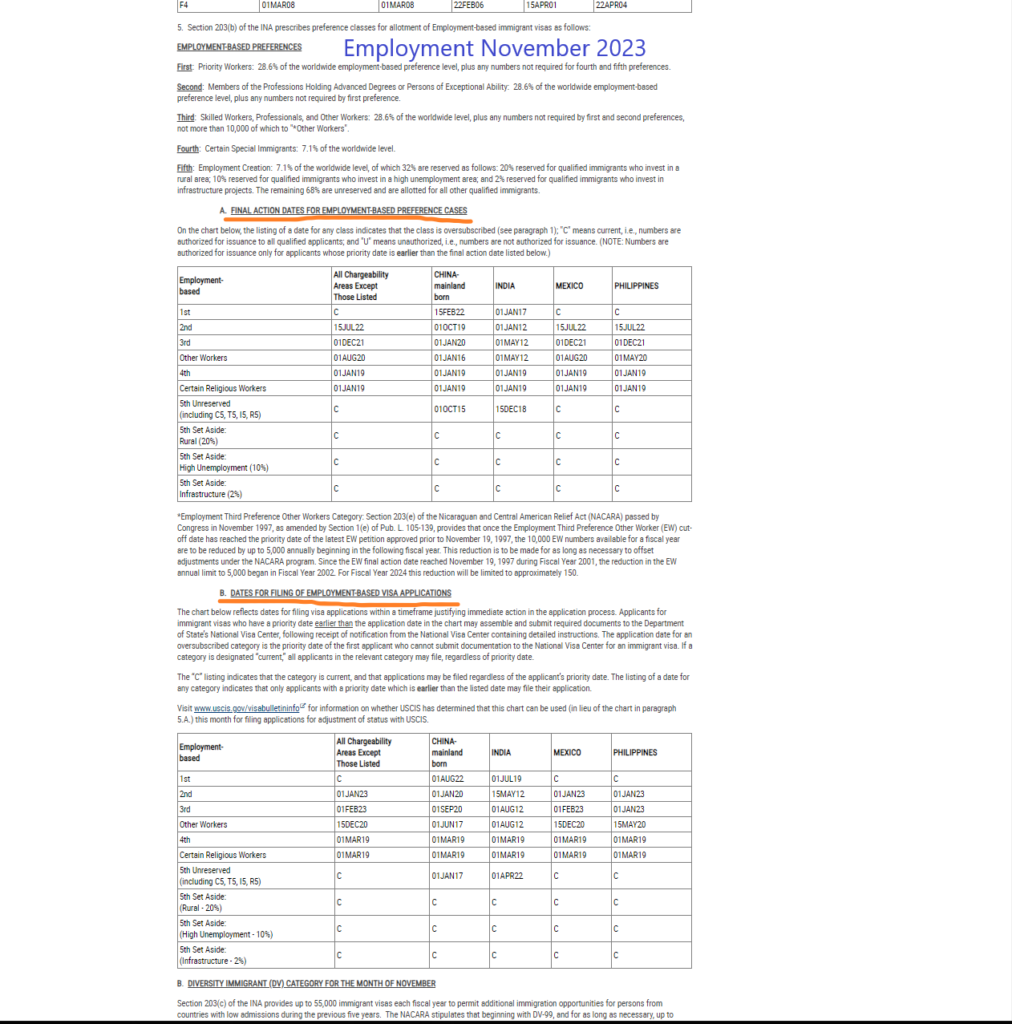
October 2023
Final action dates across most employment-based visa categories have seen advancement. This is an encouraging indication that a larger number of visa numbers are available for Fiscal Year 2024 (FY-2024).
By advancing the final action dates, the Department of State is signaling an intention to keep visa issuance well-distributed throughout the fiscal year, avoiding backlogs or rush periods.
While the October bulletin indicates potential date advancements throughout FY-2024, it’s crucial for applicants to remember that the actual date movements are not set in stone. These movements will be influenced by the demand for visas and the pattern of visa issuances as the fiscal year progresses.
Anticipated Surge in I-485 Filings for October 2023
We anticipate October 2023 to see the highest number of I-485 filings compared to the previous four Octobers (mainly due to EB5). Historically, challenges with October filings have left many applicants grappling with issues. This year, too, potential hiccups might arise.
So, what kind of complications might you face when filing in October?
Delays with Receipts: Some applicants have experienced a wait of up to three months just to receive their receipts.
Biometrics Delays: Unexpected lags in scheduling or processing biometric data can occur.
Relinking Issues: For those filing concurrently with a new I-140 EB3, there’s been a noted inability to relink I-485. And there are hardships in relinking in general via the transfer of underlying basis requests. No confirmation after making such requests.
Lack of FIFO Order: Instead of a first-in, first-out processing order, some have found unpredictable handling times.
Extended Wait Times: Prepare for longer waits than anticipated.
Finding a Civil Surgeon: It might become harder to locate an available civil surgeon for medical exams.
Retrogression: This backward movement in eligibility dates can cause setbacks.
For those with an approved I-140 EB2 considering a switch to I-140 EB3, our advice is to tread with caution. Avoid concurrent filings in October. Instead, consider first filing the I-140 EB3, and then following up with the I-485, perhaps in November. This staggered approach gives you a better chance of getting any relink requests through to USCIS if retrogression necessitates it in the future.
